Jaigarh Fort Cannon, also known as Jaivana Cannon, is a historic landmark located in Jaipur, known for its impressive military architecture. The fort houses one of the largest cannons in the world, called Jaivana. Jaigarh Fort provides visitors with panoramic views of the surrounding area. The Jaigarh Fort Cannon played a vital role in India’s history, adding to the fort’s significance. This guide will cover essential information about the fort and its cannon, so follow this till the end for a seamless experience on your trip.
Jaigarh Fort Cannon Location
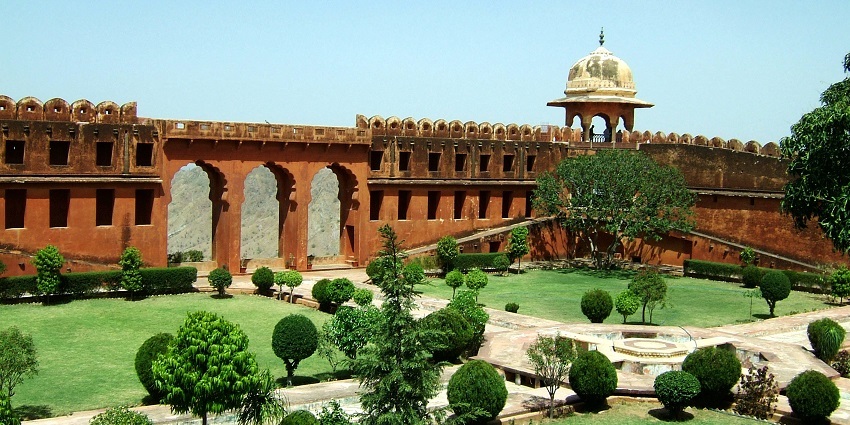
Photo: Acred99 / Wikimedia Commons
The Jaigarh Fort Cannon is located inside Jaigarh Fort, which is approximately 15 kilometres from the city of Jaipur. The fort stands at an elevation of 500 metres, offering stunning views of the Aravalli hills. Visitors can explore the intricate design of the fort and the massive Jaivana cannon, which remains a key highlight. With its strategic location, Jaigarh Fort was built to protect the Amber Fort and nearby regions, making it a crucial military site in its time.
Suggested Read: Jaipur Forts
How To Reach Jaigarh Fort Cannon
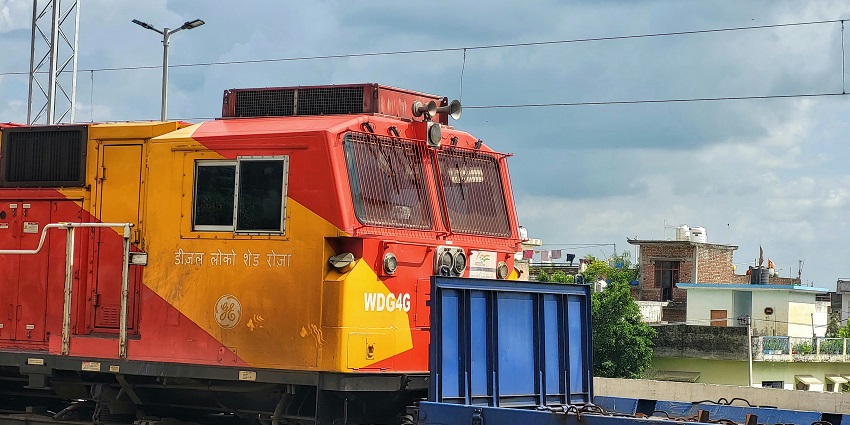
Photo: Aashish Singh / Unsplash / Image For Representation Only
By Bus: Buses frequently operate between Jaipur city and Jaigarh Fort. Visitors can board a local bus from the Jaipur bus stand to Amber Fort and then take a short ride to the fort. This is an affordable option for those travelling on a budget.
By Train: Jaigarh is well-connected by Jaipur Junction railway station, 20 kilometres from the fort. Trains from various cities across India arrive at this station, making it easy to reach Jaipur. Visitors can opt for a taxi or bus to get to the fort from the station.
By Taxi: Taxis are widely available in Jaipur and offer a comfortable way to reach the fort. Visitors can hire a private taxi to take them directly from their hotel to the fort. This option is convenient for those wanting a more relaxed and flexible schedule.
Places To Visit Around Jaigarh Fort Cannon
While visiting the Jaigarh Fort Cannon, Rajasthan consider visiting these nearby attractions:
1. Amber Fort
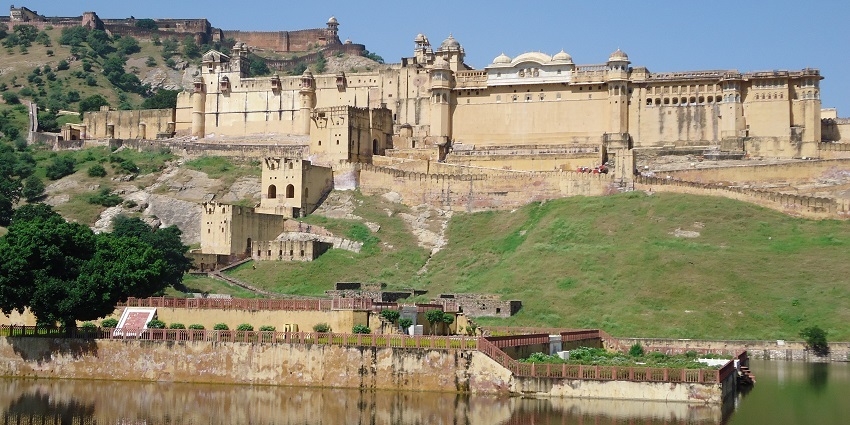
Photo: Mittalshivam81 / Wikimedia Commons
Amber Fort stands as a testament to the grandeur of the Rajput era. Its artistic blend of Hindu and Mughal architecture makes it a significant attraction in Jaipur. Visitors are captivated by the Sheesh Mahal, a marvel of intricate mirror work. The fort’s maze of courtyards, palaces, and gardens narrates the opulence of the Rajput kings who once resided here. Its location on a hill surrounded by rugged terrain adds to its defensive prowess. Guided tours provide a deep dive into the fort’s history.
Distance: 2 km from the fort
Timings: 8 AM – 5.30 PM
Suggested Read: Amber Fort Elephant Ride
2. Nahargarh Fort
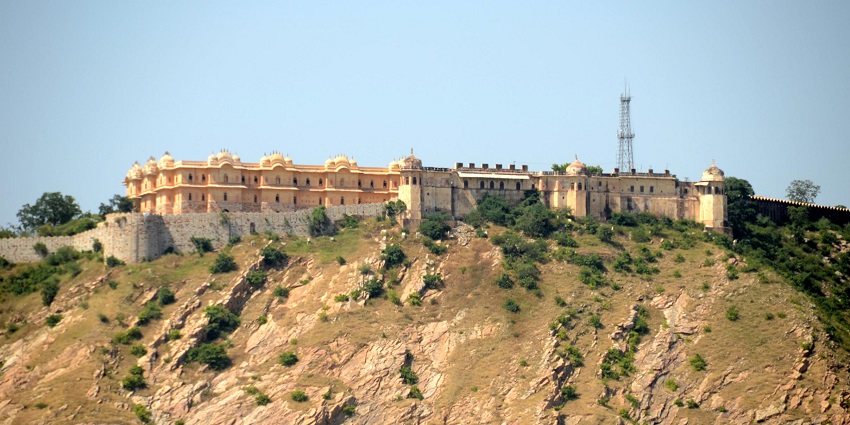
Photo: Yoge cool / Wikimedia Commons
Nahargarh Fort, perched on the Aravalli Hills, offers an expansive view of Jaipur. Built as a retreat for the royal family, it also served as a defensive fortification. The architecture features courtyards, terraces, and walls stretching across the hills. The fort’s charm lies in its historical significance and the panoramic perspective it provides of the surrounding city and countryside. Though smaller than Amber Fort, Nahargarh holds its own as a peaceful spot with stories of royal legacy and war strategy.
Distance: 5 km from the fort
Timings: 10 AM – 5.30 PM
3. Jal Mahal

Photo: Firoze Edassery / Wikimedia Commons
Jal Mahal, located in the middle of Man Sagar Lake, is a stunning five-story palace, with four levels submerged when the lake is full. Though entry inside the palace is restricted, it remains a favourite among photographers and tourists due to its striking reflection on the water. The palace’s design reflects Rajput and Mughal influences, making it a prominent architectural marvel. The surrounding lakeside area provides a tranquil environment for walking or viewing the structure from a distance.
Distance: 10 km from the fort
Timings: 24*7 (viewing from outside)
Suggested Read: Discover Top Places To Visit In Mansarovar Jaipur For A Peaceful Retreat
4. City Palace, Jaipur
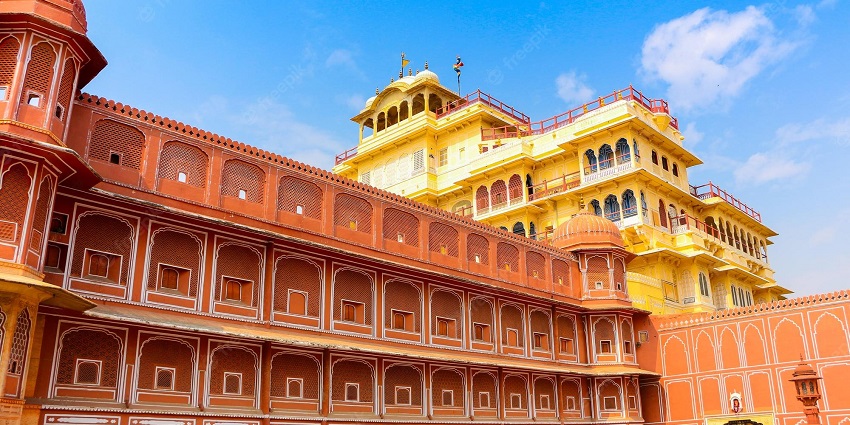
Photo: Yashaswi Garg / Wikimedia Commons
The City Palace serves as a vivid reminder of Jaipur’s royal heritage. Designed with a blend of Rajasthani and Mughal architecture, it comprises multiple palaces, courtyards, and museums. Visitors can explore the Mubarak Mahal and Chandra Mahal, each filled with historical artefacts, royal costumes, and weaponry. The palace’s blend of art and history provides insight into Jaipur’s royal lineage. Some sections remain the residence of the royal family, while others are open to the public, making it a living palace with a rich narrative.
Distance: 12 km from the fort
Timings: 9:30 AM – 5 PM
5. Jantar Mantar
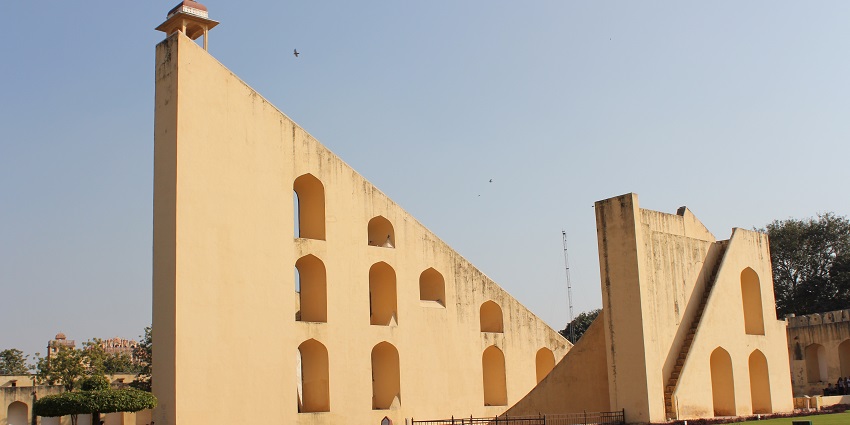
Photo: Arian Zwegers / Wikimedia Commons
Jantar Mantar is a unique astronomical observatory constructed by Maharaja Jai Singh II. It features giant stone instruments used for precise measurements of time, planetary movements, and celestial events. Visitors are often amazed by the accuracy and scale of the instruments, which are still functional. Its historical significance has earned it recognition as a UNESCO World Heritage Site. The observatory showcases Jaipur’s advancements in science and astronomy during the 18th century, offering a glimpse into the royal interest in celestial phenomena.
Distance: 13 km from the fort
Timings: 9 AM – 4:30 PM
Suggested Read: Places To Visit In Jaipur
Where To Stay
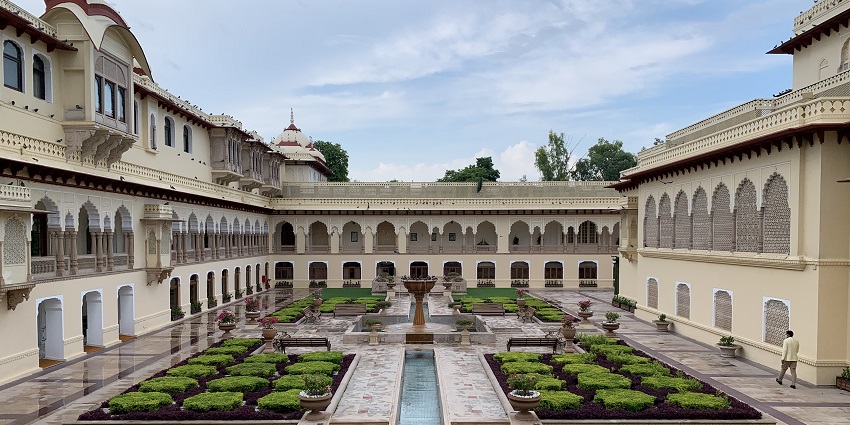
Photo: Chainwit. / Wikimedia Commons
Jaipur provides a wide range of accommodations to suit different budgets. Those looking for a luxury experience can opt for Rambagh Palace or Jai Mahal Palace, offering a royal stay with all modern amenities. Mid-range options like Holiday Inn Jaipur provide comfort without the high price tag, making it suitable for families or solo travellers. For backpackers or budget travellers, Zostel Jaipur offers a social atmosphere and essential amenities. These hotels ensure convenience for visitors keen on exploring Jaigarh Fort and nearby attractions.
Where To Eat
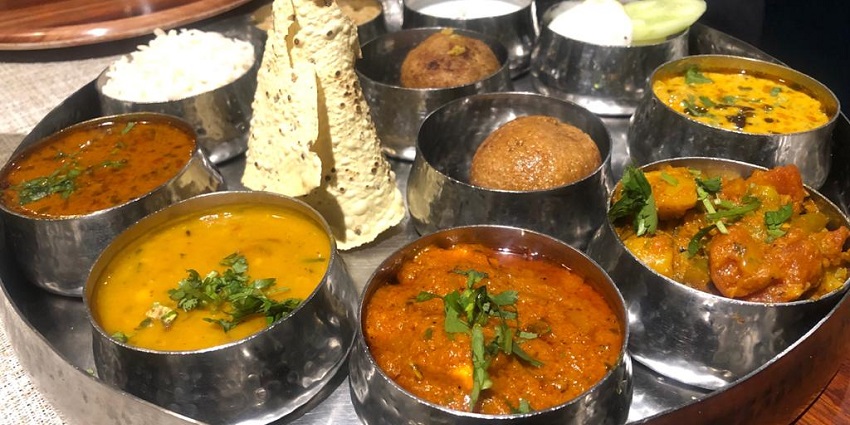
Photo: Simranjeet Sidhu / Wikimedia Commons
Jaipur’s culinary scene offers a rich variety of dishes for food lovers. Fine dining restaurants like LMB (Laxmi Misthan Bhandar) are known for serving traditional Rajasthani thalis, while Chokhi Dhani provides an immersive experience with its village-themed setup. For those seeking lighter meals or snacks, Jaipur’s street food, including kachoris and samosas, are popular choices. Cafes in the city serve a fusion of local and international cuisine, catering to varied tastes while preserving the region’s rich food heritage.
Suggested Read: A Foodie’s Guide To Street Food In Jaipur
Best Time To Visit
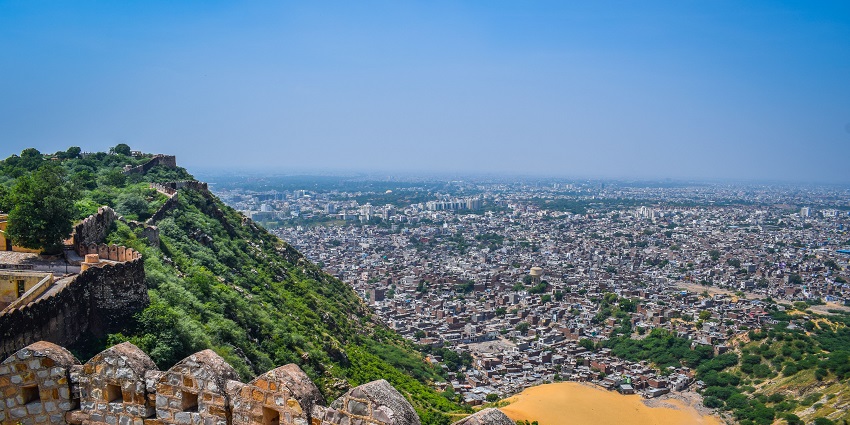
Photo: Chinmaykp25 / Wikimedia Commons
The ideal time to visit Jaigarh Fort and its surroundings is from October to March. During this period, Jaipur experiences cooler weather, making outdoor exploration comfortable. The winter months are pleasant, with temperatures ranging from 10°C to 25°C. Summers can be harsh, with temperatures soaring above 40°C, while monsoon months bring unpredictable rains that may hamper travel plans. To fully enjoy the fort and nearby attractions, visiting during the cooler months ensures a more enjoyable and comfortable experience.
Other Factors To Consider
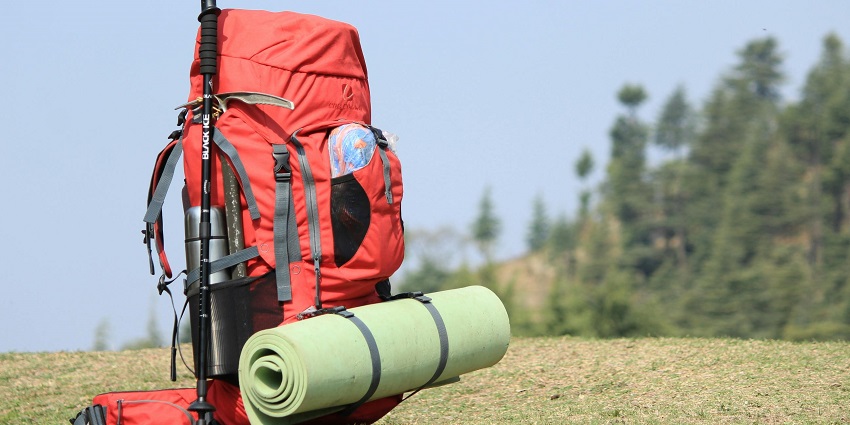
Photo: Ravindra rawat / Pexels / Image For Representation Only
Average Cost Of The Trip
For those planning a budget-friendly trip, the approximate cost, including entry fees, transport, and meals, can be around ₹82 or $1. For a more luxurious experience, especially with private tours and upscale dining, the cost will increase accordingly. The variety of accommodation options in Jaipur allows travellers to plan their trip based on their preferences without compromising on the overall experience.
Tips For Travellers
- Carry sunscreen and hats, as the fort is located in a sunny region.
- Reading Jaigarh Fort Cannon reviews can give insights into the best experiences and lesser-known facts.
- Seek permission before clicking the Jaigarh Fort Cannon pictures.
Suggested Read: Places To Visit Near Jaipur For A Serene Retreat In Rajasthan
The Jaigarh Fort Cannon is an iconic piece of Rajasthan’s history, making it a must-visit site for those with an interest in ancient warfare and engineering. Known as one of the largest cannons in the world, it symbolises the power and grandeur of the fort’s military history. Book your trip with TripXL and delve into the fascinating past of Rajasthan, exploring its rich cultural heritage.
Cover Photo: Wander-earth / Wikimedia Commons


 WhatsApp
WhatsApp
 Twitter
Twitter









